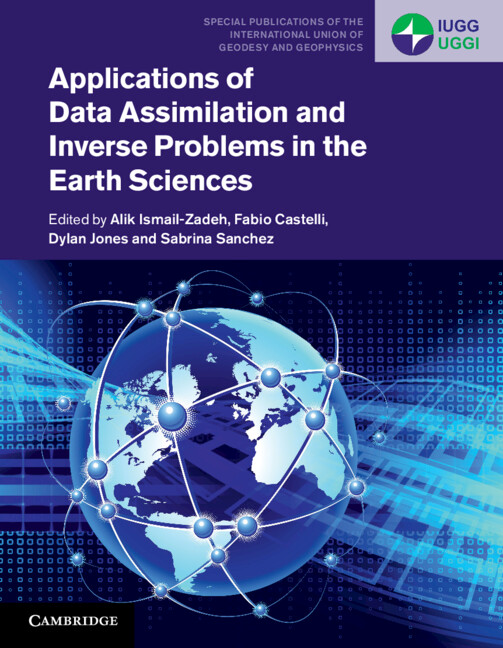
At the end of the last century, Stephen Hawking (1942-2018) mentioned that ‘the next century will be the century of complexity’. Indeed, many contemporary problems faced by Earth sciences and society are complex (e.g. climate change, disaster risk, energy and water security, and preservation of oceans). These problems are mainly related to dynamic processes within the planet, on its surface, and in its environment. Geoscientists study the processes using observations and measurements of their manifestations. Each geological or geophysical process can be presented by a model described by physical and/or chemical laws. The model, in its turn, can be represented by a mathematical model, which links its variables and parameters with a set of data from observations and measurements and provides a connection between the causal characteristics of the dynamic process and its effects. Mathematical, statistical, and numerical methods link data through models to allow analyzing challenging problems in the Earth sciences; among the basic methods are data assimilation and geophysical inversions.
Studies of these challenges require an interdisciplinary approach and common knowledge. Ability to utilize data within and across geophysical disciplines remains limited as the knowledge of the models and methodologies for data analyses and data assimilation developed in one discipline is limited, if not unknown, within the scientific communities of other geoscience disciplines. The idea to write a book on data assimilation and inverse problems in the Earth sciences maturated during a series of scientific meetings organized by the International Union of Geodesy and Geophysics since 2015. The meetings brought together prominent experts in different fields of geoscience to address recent developments, challenges, and perspectives in data assimilation and geophysical inversions.
The book Applications of Data Assimilation and Inverse Problems in the Earth Sciences contributes to closing the gap between Earth science disciplines and assists in utilization of the growing amount of data from observations and experiments using sophisticated models and techniques on data assimilation and inversions developed within the same/another discipline or across the disciplines. This book sets out basic principles of inverse problems and data assimilation and presents applications of data assimilation and inverse problems in many geoscience disciplines.
The book highlights the importance of research in data assimilation and geophysical inversions for predictability and for understanding dynamic processes of the Earth and its space environment. It summarises new advances in the field of assimilation and inversions related to different geoscience fields, and assists in scientific understanding and forecasting natural hazards, such as atmospheric pollution, floods, earthquakes, and volcanoes. This multi-authored book covers a range of important research issues, consists of twenty-two peer-reviewed chapters and is organised into the three parts. Part I describes the basic knowledge about inverse problems and data assimilation. Part II presents the applications of data assimilation and geophysical inversions to problems related to atmospheric chemistry, cryosphere, hydrology, volcanic cloud propagation, and near-Earth electron radiation. Part III discusses application of data assimilation and inversions to geochronology, lava dynamics, ground shaking due to earthquakes, seismic tomography, gravity and geodetic inversions, geodynamics, geomagnetism, and joint geophysical inversions. This book is believed to inspire more researchers to focus on data assimilation and inverse problems in the Earth sciences and to provide a useful theoretical reference and practical applications of data assimilation and inverse problems.
The book is intended for academic researchers and graduate students from a broad spectrum of Earth and environmental science disciplines interested in data assimilation and inverse problems. Although the book does not contain all methods for data assimilation and inversions, it is believed that the methods and the applications described here will be helpful for understanding how Earth observations and data can be utilised to quantitatively resolve some problems in dynamics of the Earth and its environment. Enjoy reading this book to learn more about inverse problems and assimilation of data in the Earth sciences!
Alik Ismail-Zadeh, the principal editor and a lead author of the book Applications of Data Assimilation and Inverse Problems in the Earth Sciences

Latest Comments
Have your say!